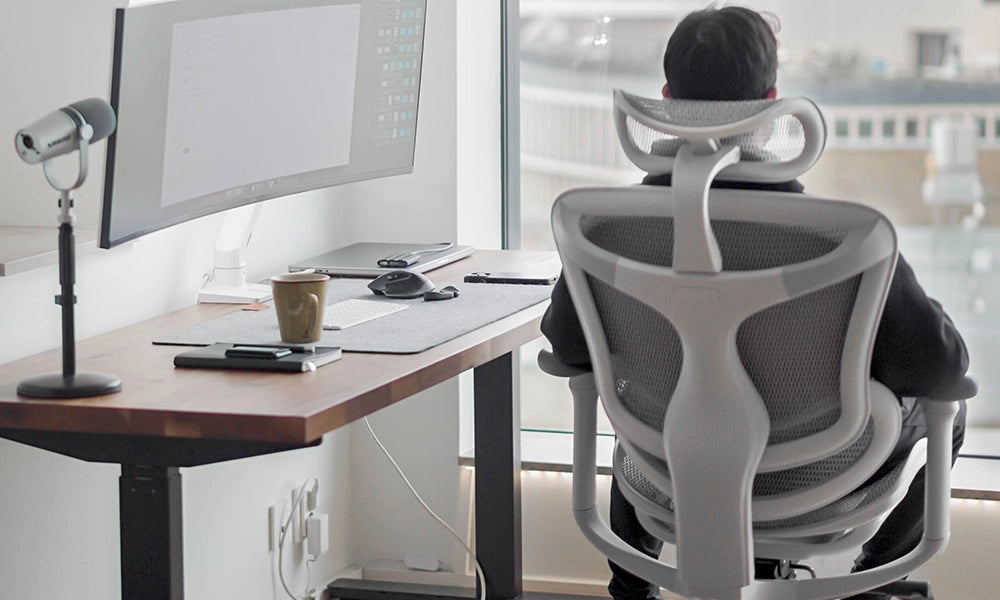In the modern era of sedentary work environments, the ergonomic office chair has become a staple for promoting comfort, productivity, and long-term health. Designed to support the natural curve of the spine and minimize stress on the body during prolonged sitting, these chairs are an investment in both employee well-being and performance. However, like any tool or equipment, ergonomic chairs require maintenance and eventual replacement to continue providing optimal benefits. In this blog post, we explore the signs that indicate when it's time to replace your ergonomic office chair.
Understanding Ergonomic Office Chairs
Before diving into when to replace them, let's first understand what makes ergonomic chairs essential. These chairs are specifically engineered to:
- Support Posture: They promote a natural posture by supporting the spine's curvature, which reduces strain on the lower back and neck.
- Adjustability: Ergonomic chairs typically offer various adjustments for seat height, lumbar support, armrest height, and tilt angle, allowing users to customize their seating position for comfort.
- Comfort: The materials used (such as breathable mesh, high-density foam, or leather) are chosen for comfort during extended use.
- Durability: High-quality ergonomic chairs are built to last, but their longevity depends on usage, maintenance, and environmental factors.
Signs it's Time to Replace Your Ergonomic Office Chair
- Visible Wear and Tear:
- Seat Cushion Degradation: Over time, the seat cushion can lose its firmness and support due to compression of foam or padding. If you notice significant flattening or unevenness in the cushion, it may no longer provide adequate support for your body.
- Fabric or Upholstery Damage: Tears, fraying, or worn-out upholstery not only affect the chair's aesthetics but also its comfort and structural integrity. Damaged fabric can lead to discomfort and may be a sign of underlying structural issues.
- Loss of Adjustability:
- Mechanical Issues: If mechanisms for adjusting seat height, tilt, or lumbar support become difficult to operate or fail to hold adjustments, it can impact your ability to maintain proper ergonomic posture.
- Discomfort or Pain:
- Persistent Discomfort: If you experience discomfort or pain (such as lower back pain or stiffness) even after adjusting the chair, it could indicate that the chair no longer provides adequate support or has lost its ergonomic design integrity.
- Squeaks or Noises:
- Audible Signs of Wear: Squeaks, creaks, or other noises when moving or adjusting the chair may indicate worn-out mechanical components or structural issues that compromise the chair's stability.
- Age and Usage:
- General Guidelines: While there is no fixed expiration date for ergonomic chairs, factors such as frequency of use, weight capacity adherence, and environmental conditions (like humidity or temperature) can impact longevity.
- Manufacturer Recommendations: Some manufacturers provide guidelines on expected lifespan based on materials and construction quality. Adhering to these recommendations can help prevent issues related to prolonged use.
Maintaining Your Ergonomic Chair for Longevity
While replacing your ergonomic office chair at the right time is crucial, proper maintenance can extend its lifespan:
- Regular Cleaning: Dust and debris can accumulate in the chair's crevices and upholstery, leading to premature wear. Regular cleaning with a gentle vacuum or upholstery cleaner can prevent this.
- Inspecting Mechanisms: Periodically check and lubricate mechanical parts such as casters, tilt mechanisms, and armrest adjustments to ensure smooth operation and longevity.
- Using as Intended: Avoid using the chair in ways that exceed its design limitations, such as exceeding weight capacities or using it on uneven surfaces that stress the frame.
- Adjusting Ergonomics: Continuously adjust the chair to support your changing posture and comfort needs, ensuring it remains effective over time.
Choosing a Replacement Ergonomic Chair
When the time comes to replace your ergonomic office chair, consider these factors:
- Ergonomic Features: Look for chairs that offer similar or improved ergonomic features to support your posture and comfort needs.
- Quality Materials: Choose chairs made from durable materials that withstand daily use and provide long-term comfort.
- User Feedback: Read reviews and user experiences to gauge the chair's durability, comfort, and ergonomic effectiveness.
- Warranty and Support: Opt for chairs that come with warranties or guarantees to protect your investment against defects and premature wear.
Conclusion
Your ergonomic office chairs plays a vital role in your daily comfort, productivity, and long-term health. Knowing when to replace it involves recognizing signs of wear, loss of functionality, or discomfort that compromise its effectiveness. By understanding these signs and maintaining your chair properly, you can maximize its lifespan and ensure continued support for your well-being in the workplace. When the time comes for a replacement, invest in a quality ergonomic chair that meets your needs and supports your health for years to come.



































